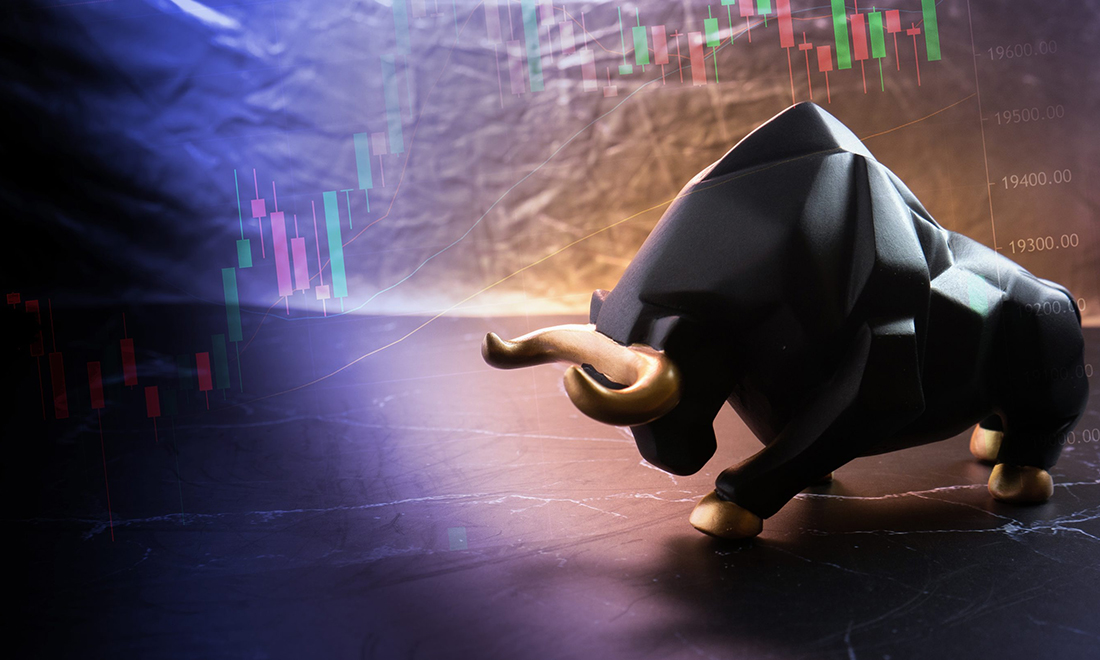
對于這位(資深)作者來說,,就在海量數(shù)據(jù)的基礎(chǔ)上提供更有根據(jù)的,、更令人信服的對多種資產(chǎn)類別未來投資回報(bào)的預(yù)測而言,沒有任何來源能與Research Affiliates相媲美,。該來源現(xiàn)在對美國大盤股(2023年迄今為止的反彈行情)的預(yù)測確實(shí)令人警醒,。
基于對通脹和收益的預(yù)期,Research Affiliates預(yù)計(jì)標(biāo)準(zhǔn)普爾500指數(shù)未來10年的年實(shí)際回報(bào)率僅為2%,,與過去10年的年回報(bào)率相比微乎其微,。
Research Affiliates(以下簡稱RA)是一家為太平洋投資管理公司(Pimco)、嘉信理財(cái)(Charles Schwab)和景順(Invesco)等管理公司設(shè)計(jì)1300億美元共同基金和交易所交易基金(ETFs)投資策略的公司,。它創(chuàng)建了一個(gè)被稱為“基本面指數(shù)”的模板,,該模板不以美元價(jià)值來衡量股票,而是以現(xiàn)金流,、銷售額和股息等基本指標(biāo)來衡量股票,。因此,該公司的RAFI基本面基金在結(jié)構(gòu)上避免了最昂貴的股票占總資產(chǎn)比例越來越高的情況,,這對于傳統(tǒng)指數(shù)基金,、交易所交易基金和其他基于股票市值分配的“市值加權(quán)”工具來說是個(gè)大問題。RA創(chuàng)始人羅伯·阿諾特(Rob Arnott)曾任《金融分析師期刊》(Financial Analysts Journal)主編,,是投資組合管理領(lǐng)域的頂尖學(xué)術(shù)思想家之一,。RA的首席執(zhí)行官兼首席投資官克里斯·布萊曼(Chris Brightman)也是投資行業(yè)中著名的以科學(xué)為基礎(chǔ)的數(shù)據(jù)分析大師之一。
RA網(wǎng)站上有一張“資產(chǎn)交互配置”地圖,,顯示了該公司對30多種投資類別的10年總回報(bào)預(yù)測,,從新興市場到房地產(chǎn)投資信托基金(REITs),從通貨膨脹保值債券(TIPS)到大宗商品,。這些數(shù)字是基于“回歸均值”原則得出的,。例如,在預(yù)測估值變化時(shí),,RA預(yù)測未來10年,,市盈率(P/Es)將從當(dāng)前水平向長期平均水平移動。該公司還認(rèn)為,,每股收益將增長至接近歷史標(biāo)準(zhǔn)的水平,,而忽略了華爾街分析師通常提出的持續(xù)兩位數(shù)增長的樂觀預(yù)測。
市盈率的下降和利潤的溫和增長將意味著未來的低收益
在其美國大盤股的表格中,,RA預(yù)測,,到2033年,,每股收益(EPS)平均每年將增長5.4%。這個(gè)數(shù)字相當(dāng)于2.5%的“實(shí)際”漲幅,,因?yàn)镽A預(yù)計(jì)年通脹率將達(dá)到2.9%,,遠(yuǎn)高于美聯(lián)儲2%的目標(biāo)。與2013年年中至2023年年中這段時(shí)間相比,,2.5%的利潤增幅聽起來低得驚人,,而那段時(shí)間利潤平均每年高出通脹5.2個(gè)百分點(diǎn),但從歷史標(biāo)準(zhǔn)來看,,這一增幅實(shí)際上相當(dāng)不錯(cuò),。久負(fù)盛名的研究表明,長期來看,,每股收益滯后于GDP,,因?yàn)槠髽I(yè)會進(jìn)行稀釋性收購,而新進(jìn)入者會榨干曾經(jīng)由老牌企業(yè)瓜分的銷售額和利潤池,。RA的觀點(diǎn)暗示,,每股收益很可能“跑贏”經(jīng)濟(jì),因?yàn)槠鋽U(kuò)張速度快于經(jīng)濟(jì)增長速度,;國會預(yù)算辦公室(Congressional Budget Office)預(yù)測,,到2033年,GDP的年增長率將僅為1.7%至1.8%,。因此,,RA對收益持合情合理卻也相當(dāng)樂觀的看法,。
相比之下,,華爾街分析師預(yù)計(jì),,僅從今年第一季度到2024年底,,標(biāo)準(zhǔn)普爾500指數(shù)成分股每股收益將增長29%,,在短短七個(gè)季度內(nèi)就達(dá)到RA 10年預(yù)測的40%以上,。
RA預(yù)計(jì)股息的年回報(bào)率將增加1.7%,,接近目前的收益率,。加上股息率和預(yù)期收益增長率,,預(yù)計(jì)年回報(bào)率為7.1%。但如果市盈率穩(wěn)定在今天25倍的水平,,這就是你能獲得的總回報(bào),。但根據(jù)RA的最佳估計(jì),這是不可能發(fā)生的,。
該公司預(yù)計(jì),,基于過去12個(gè)月利潤計(jì)算的標(biāo)準(zhǔn)普爾500指數(shù)的市盈率,將降至近幾十年的正常水平,。但這再一次表明,,這種看法并不悲觀,。RA預(yù)計(jì)市盈率將從25降至20.4,這一數(shù)字與過去30年的中位數(shù)相近,。如果市盈率保持在目前的25倍,,那么股價(jià)的年收益將從5.4%下降2.2個(gè)百分點(diǎn),降至僅3.2%,。3.2%的年資本收益加上1.7%的股息率,,RA的總回報(bào)率為4.9%。
根據(jù)RA公式,,標(biāo)準(zhǔn)普爾500指數(shù)10年后的表現(xiàn)如何,?3.2%的年凈漲幅意味著,標(biāo)準(zhǔn)普爾500指數(shù)將在2033年6月觸及6000點(diǎn),,僅比6月22日的收盤價(jià)4381點(diǎn)高出37%,。
與過去10年相比,這一預(yù)測看起來尤其糟糕
最重要的衡量標(biāo)準(zhǔn)是4.9%的年收益給你帶來的額外購買力,。在2.9%的預(yù)期通脹率下,,你投資組合中的美元將只比食品價(jià)格、租金和所有其他費(fèi)用(4.9%的總收益減去2.9%的預(yù)期通脹率)的增長快2%,。換句話說,,主要是因?yàn)橥顿Y大盤股的起點(diǎn)太高了,未來10年你可能只能獲得2%的實(shí)際年回報(bào)率,。
與過去10年的暴利相比,,這一數(shù)字似乎幾乎是無法想象的。從2013年年中到2023年年中,,標(biāo)準(zhǔn)普爾500指數(shù)經(jīng)通脹因素調(diào)整后的年總回報(bào)率為10.1%,。這是RA認(rèn)為未來10年最有可能實(shí)現(xiàn)的年總回報(bào)率的五倍。提示一下,。散戶和基金可以在2013年第二季度以17.6倍的市盈率買入標(biāo)準(zhǔn)普爾500指數(shù),。股價(jià)將比現(xiàn)在便宜30%。這些便宜的股票為高回報(bào)開辟了道路,。展望未來,,與過去相反的動態(tài)將占據(jù)主導(dǎo)地位。在獲得巨大收益之后,,會出現(xiàn)低回報(bào)時(shí)期,。這就是市場蹺蹺板回歸平衡的方式。未來幾年可能會出現(xiàn)這樣的嚴(yán)峻形勢,。(財(cái)富中文網(wǎng))
譯者:中慧言-王芳
對于這位(資深)作者來說,,就在海量數(shù)據(jù)的基礎(chǔ)上提供更有根據(jù)的、更令人信服的對多種資產(chǎn)類別未來投資回報(bào)的預(yù)測而言,,沒有任何來源能與Research Affiliates相媲美,。該來源現(xiàn)在對美國大盤股(2023年迄今為止的反彈行情)的預(yù)測確實(shí)令人警醒,。
基于對通脹和收益的預(yù)期,Research Affiliates預(yù)計(jì)標(biāo)準(zhǔn)普爾500指數(shù)未來10年的年實(shí)際回報(bào)率僅為2%,,與過去10年的年回報(bào)率相比微乎其微,。
Research Affiliates(以下簡稱RA)是一家為太平洋投資管理公司(Pimco)、嘉信理財(cái)(Charles Schwab)和景順(Invesco)等管理公司設(shè)計(jì)1300億美元共同基金和交易所交易基金(ETFs)投資策略的公司,。它創(chuàng)建了一個(gè)被稱為“基本面指數(shù)”的模板,,該模板不以美元價(jià)值來衡量股票,而是以現(xiàn)金流,、銷售額和股息等基本指標(biāo)來衡量股票,。因此,該公司的RAFI基本面基金在結(jié)構(gòu)上避免了最昂貴的股票占總資產(chǎn)比例越來越高的情況,,這對于傳統(tǒng)指數(shù)基金,、交易所交易基金和其他基于股票市值分配的“市值加權(quán)”工具來說是個(gè)大問題。RA創(chuàng)始人羅伯·阿諾特(Rob Arnott)曾任《金融分析師期刊》(Financial Analysts Journal)主編,,是投資組合管理領(lǐng)域的頂尖學(xué)術(shù)思想家之一,。RA的首席執(zhí)行官兼首席投資官克里斯·布萊曼(Chris Brightman)也是投資行業(yè)中著名的以科學(xué)為基礎(chǔ)的數(shù)據(jù)分析大師之一。
RA網(wǎng)站上有一張“資產(chǎn)交互配置”地圖,,顯示了該公司對30多種投資類別的10年總回報(bào)預(yù)測,,從新興市場到房地產(chǎn)投資信托基金(REITs),從通貨膨脹保值債券(TIPS)到大宗商品,。這些數(shù)字是基于“回歸均值”原則得出的,。例如,在預(yù)測估值變化時(shí),,RA預(yù)測未來10年,,市盈率(P/Es)將從當(dāng)前水平向長期平均水平移動。該公司還認(rèn)為,,每股收益將增長至接近歷史標(biāo)準(zhǔn)的水平,,而忽略了華爾街分析師通常提出的持續(xù)兩位數(shù)增長的樂觀預(yù)測。
市盈率的下降和利潤的溫和增長將意味著未來的低收益
在其美國大盤股的表格中,,RA預(yù)測,,到2033年,每股收益(EPS)平均每年將增長5.4%,。這個(gè)數(shù)字相當(dāng)于2.5%的“實(shí)際”漲幅,因?yàn)镽A預(yù)計(jì)年通脹率將達(dá)到2.9%,,遠(yuǎn)高于美聯(lián)儲2%的目標(biāo),。與2013年年中至2023年年中這段時(shí)間相比,2.5%的利潤增幅聽起來低得驚人,,而那段時(shí)間利潤平均每年高出通脹5.2個(gè)百分點(diǎn),,但從歷史標(biāo)準(zhǔn)來看,,這一增幅實(shí)際上相當(dāng)不錯(cuò)。久負(fù)盛名的研究表明,,長期來看,,每股收益滯后于GDP,因?yàn)槠髽I(yè)會進(jìn)行稀釋性收購,,而新進(jìn)入者會榨干曾經(jīng)由老牌企業(yè)瓜分的銷售額和利潤池,。RA的觀點(diǎn)暗示,每股收益很可能“跑贏”經(jīng)濟(jì),,因?yàn)槠鋽U(kuò)張速度快于經(jīng)濟(jì)增長速度,;國會預(yù)算辦公室(Congressional Budget Office)預(yù)測,到2033年,,GDP的年增長率將僅為1.7%至1.8%,。因此,RA對收益持合情合理卻也相當(dāng)樂觀的看法,。
相比之下,,華爾街分析師預(yù)計(jì),僅從今年第一季度到2024年底,,標(biāo)準(zhǔn)普爾500指數(shù)成分股每股收益將增長29%,,在短短七個(gè)季度內(nèi)就達(dá)到RA 10年預(yù)測的40%以上。
RA預(yù)計(jì)股息的年回報(bào)率將增加1.7%,,接近目前的收益率,。加上股息率和預(yù)期收益增長率,預(yù)計(jì)年回報(bào)率為7.1%,。但如果市盈率穩(wěn)定在今天25倍的水平,,這就是你能獲得的總回報(bào)。但根據(jù)RA的最佳估計(jì),,這是不可能發(fā)生的,。
該公司預(yù)計(jì),基于過去12個(gè)月利潤計(jì)算的標(biāo)準(zhǔn)普爾500指數(shù)的市盈率,,將降至近幾十年的正常水平,。但這再一次表明,這種看法并不悲觀,。RA預(yù)計(jì)市盈率將從25降至20.4,,這一數(shù)字與過去30年的中位數(shù)相近。如果市盈率保持在目前的25倍,,那么股價(jià)的年收益將從5.4%下降2.2個(gè)百分點(diǎn),,降至僅3.2%。3.2%的年資本收益加上1.7%的股息率,RA的總回報(bào)率為4.9%,。
根據(jù)RA公式,,標(biāo)準(zhǔn)普爾500指數(shù)10年后的表現(xiàn)如何?3.2%的年凈漲幅意味著,,標(biāo)準(zhǔn)普爾500指數(shù)將在2033年6月觸及6000點(diǎn),,僅比6月22日的收盤價(jià)4381點(diǎn)高出37%。
與過去10年相比,,這一預(yù)測看起來尤其糟糕
最重要的衡量標(biāo)準(zhǔn)是4.9%的年收益給你帶來的額外購買力,。在2.9%的預(yù)期通脹率下,你投資組合中的美元將只比食品價(jià)格,、租金和所有其他費(fèi)用(4.9%的總收益減去2.9%的預(yù)期通脹率)的增長快2%,。換句話說,主要是因?yàn)橥顿Y大盤股的起點(diǎn)太高了,,未來10年你可能只能獲得2%的實(shí)際年回報(bào)率,。
與過去10年的暴利相比,這一數(shù)字似乎幾乎是無法想象的,。從2013年年中到2023年年中,,標(biāo)準(zhǔn)普爾500指數(shù)經(jīng)通脹因素調(diào)整后的年總回報(bào)率為10.1%。這是RA認(rèn)為未來10年最有可能實(shí)現(xiàn)的年總回報(bào)率的五倍,。提示一下,。散戶和基金可以在2013年第二季度以17.6倍的市盈率買入標(biāo)準(zhǔn)普爾500指數(shù)。股價(jià)將比現(xiàn)在便宜30%,。這些便宜的股票為高回報(bào)開辟了道路,。展望未來,與過去相反的動態(tài)將占據(jù)主導(dǎo)地位,。在獲得巨大收益之后,,會出現(xiàn)低回報(bào)時(shí)期。這就是市場蹺蹺板回歸平衡的方式,。未來幾年可能會出現(xiàn)這樣的嚴(yán)峻形勢,。(財(cái)富中文網(wǎng))
譯者:中慧言-王芳
For this (veteran) writer, no source provides more data-rich, well-founded, and convincing forecasts for future investment returns in multiple asset classes than Research Affiliates. And what that source now foresees for U.S. big-cap stocks, the comeback kids so far in 2023, is sobering indeed.
Based on its expectations for inflation and earnings, Research Affiliates expects the S&P 500 to deliver real returns of just 2% a year for the next decade—a tiny fraction of their annual returns over the past 10 years.
Research Affiliates is a firm that designs investment strategies for $130 billion in mutual funds and ETFs for such managers as Pimco, Charles Schwab, and Invesco. It created a template called “fundamental indexing” that weights stocks not by their dollar value, but by such bedrock measures as cash flow, sales, and dividends. The firm’s RAFI-branded fundamental funds are hence structured to avoid putting a bigger and bigger percentage of total holdings in the most expensive stocks, a big problem for traditional index funds and ETFs and other “cap-weighted” vehicles where allocations are based on stocks’ market capitalization. RA founder Rob Arnott is the former editor-in-chief of Financial Analysts Journal, and ranks among the top academic thinkers in portfolio management. RA’s CEO and chief investment officer, Chris Brightman, is also one of the leading masters of scientifically based data analysis in the investment industry.
The RA website features an “Asset Allocation Interactive” map that shows the firm’s 10-year total return projections for three dozen investment categories, from emerging markets to REITs, from TIPS to commodities. The numbers are based on the principal of “reversion to the mean.” In predicting changes in valuation, for example, RA forecasts that over the next decade, price/earnings ratios (P/Es) will move from their current levels toward their long-term averages. It also deems that earnings per share will expand close to historical norms, and ignores the bluebird predictions of consistent, double-digit growth usually posited by Wall Street analysts.
Falling P/Es and modest profit growth will mean low future returns
In its table for U.S. large caps, RA predicts that earnings per share (EPS) will rise, on average, at 5.4% a year through 2033. That number equates to 2.5% “real” gains, since RA foresees inflation running at a 2.9% annual pace, well above the Federal Reserve’s 2% target. That 2.5% profit growth figure sounds shockingly low when compared with the period from mid-2013 to mid-2023, when profits beat inflation by an average of 5.2 percentage points a year, but it’s actually pretty good by historical norms. Well-regarded research shows that over the long run, EPS lags GDP as companies make dilutive acquisitions and new entrants drain the sales and profit pools once divided among entrenched stalwarts. The RA view implies that EPS may well “outperform” by expanding faster than the economy; the Congressional Budget Office predicts that GDP will grow at just 1.7% to 1.8% a year through 2033. Hence, RA is taking a sound but fairly optimistic view on earnings.
By contrast, Wall Street analysts are positing that S&P 500 EPS expands by 29% from Q1 of this year through the end of 2024 alone, achieving over 40% of the RA 10-year forecast in just seven quarters.
RA predicts an additional 1.7% annual return from dividends, close to the current yield. Add the dividend yield and projected growth in earnings, and you get 7.1%. But that’s the total return you’d garner if the P/E stays steady at today’s level of 25. By RA’s best estimates, that’s not going to happen.
The firm sees the 500 P/E, based on trailing, 12-month profits, contracting toward its norm of recent decades. But once again, the take is hardly pessimistic. RA foresees a decline in the multiple from 25 to 20.4, a figure that’s around the median for the past 30 years. The almost five-point shrinkage reduces yearly gains in stock prices from the 5.4% they’d register if the P/E stayed at the current 25, by 2.2 points a year, to an annual pace of just 3.2%. Add that 3.2% in annual capital gains to the 1.7% dividend yield, and you get the RA total return of 4.9%.
Where does the RA formula see the S&P 500 index 10 years hence? The net 3.2% annual increase in share prices would mean the 500 hits 6000 in June of 2033, just 37% above its close of 4381 on June 22.
The forecast looks especially bad compared with the past decade
The most important measure is the additional buying power the 4.9% annual gains will give you. At 2.9% projected inflation, the dollars in your portfolio will grow only 2% faster than the increase in food prices, rent, and all other expenses (that 4.9% total gain minus 2.9% projected inflation). Put another way, largely because the starting point for investing in big-caps is so expensive, you’re likely to garner only 2% real, annual returns over the next decade.
Compared with the bounty of the past 10 years, that number seems almost inconceivable. From mid-2013 to mid-2023, the S&P 500 delivered a total, inflation-adjusted yearly return of 10.1%. That’s five times what RA deems most likely for the next decade. Just a hint. Folks and funds could buy the index in Q2 of 2013 at a P/E of 17.6. That’s 30% cheaper than today. Those bargain prices opened the way to the high returns. Moving forward, the opposite dynamic will take charge. Periods of low returns follow episodes of outsize gains. That’s how the market seesaw shifts back into balance. And that’s the grim dynamic likely to reign in the years ahead.






